The Mosin-Nagant is one of the most well-known rifles in the world and is likely the most used rifle in all of modern warfare. In this review, we will dive into looking at this dated weapon technology.
Overview
To start this look at the M91/30 Mosin Nagant and its major carbine versions, the M38 and M44, we first need to look back in time to reflect and know where the design came from.
You are viewing: When Was The Mosin Nagant Made
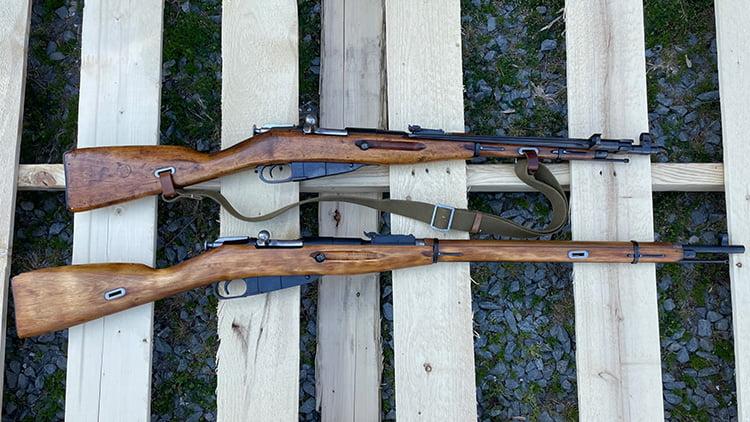
In 1891, the Three Line Rifle was introduced into the service of the Russian Empire. The Russian Empire was formed in 1721. Obviously, this time period is pre-modern day Russia, and even pre-USSR.
The Three Line rifle would be fielded by the Russian Empire until 1930 when an overhaul of the design was made that brought about a few advancements, but the general shape of the Mosin stayed the same. At that point, the M1891 would be known as the M91/30.
History
Looking back through the decades gives us a pretty good glance at where the Mosin Nagant rifle has been.
Until recently, most of these relics have been tucked into storage while soaked in cosmoline since the fall of the USSR. Cosmoline is a generic petroleum-based product that has been used to help prevent rust and preserve the condition of these old warhorses of a rifle.
Funny enough, when the rifle was introduced the cavalry wasn’t mechanized as it is today, so they were quite literally fielded from horseback. This is one of the driving factors in the development of a carbine version sometimes referred to as Cossack Rifles. They were developed and sighted to be used without bayonets. This is a logical choice as the chances of injuring the mount or the soldier was much higher with a bayonet either in their pack or mounted on the rifle itself.
Although it would appear like the rifle did not progress much over time, you have to keep in mind the country of origin and their philosophy when it comes to tools and even weapons for that matter.
Inventors
Sergei Ivanovich Mosin, who was a Russian Engineer and a Major General in the Russian Imperial Army is said to be the main contributor to the design of the Mosin-Nagant rifle. His original design was called the Three Line Rifle.
General Mosin was entered into a military academy around the age of 12 and continued his education through several different ones until he graduated in 1875 and was sent to the Tula Arsenal where he worked in the machining division.
Leon Nagant, a Belgian, became attached to the rifle development after his submission failed and he filed a field suit after obtaining patents based off of Mosin’s designs. Mosin could not file for patents as the design was viewed as property of Russia and not his own as he was a military officer.
Development
At the turn of the age when black powder became a thing of the past, many standing armies the world over realized they needed a new, improved rifle to put in the hands of their fighting men.
Some nations decide to make entirely new rifles along with the cartridges to shoot them to be able to take full advantage of the continuing advancement of technology and manufacturing processes. Some like to stick with what they know to work best.
The latter is what the Russian government chose to do as they sought to update their stock of Three Line Rifles or M1891’s into the M91/30.
A vast majority of their former stock was converted into the M91/30.
The changes included simplification of the receiver and slight adjustments to the sights. Also, there were changes in the forestock and barrel bands.
Caliber/Cartridge
The Mosin-Nagant caliber is the 7.62x54mmR and we previously covered the 7.62x54mmR cartridge in-depth, we will briefly recap here.
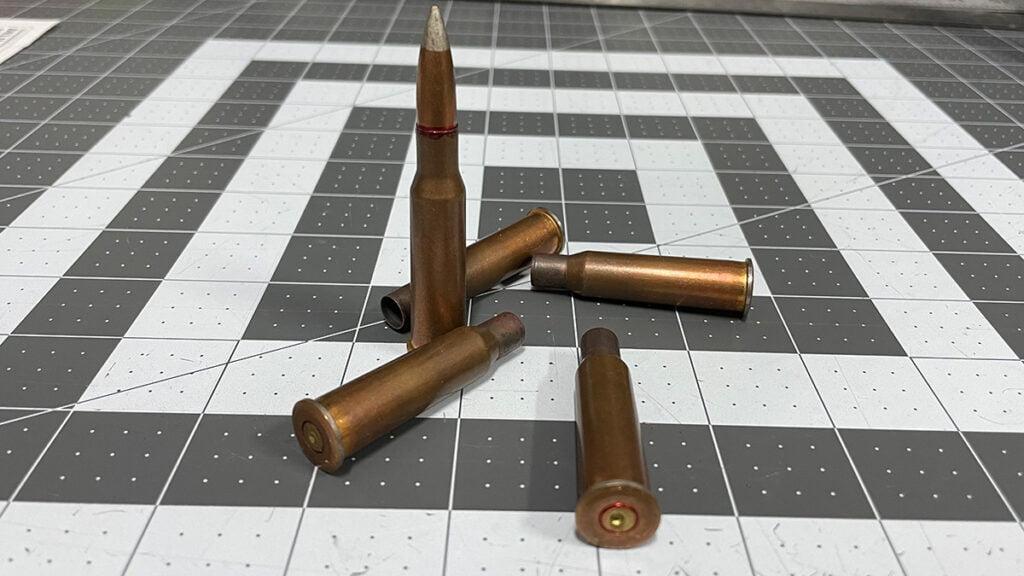
The 7.62x54R cartridge is a fully rimmed cartridge firing a .30 caliber ball round. The primer and powder both can be corrosive, and damage your rifle if left uncleaned.
This cartridge was developed in replacement of previous black powder rounds and has seen vast use in almost every theater of war since in Europe, Asia, and even in the Middle East and Africa.
Fix Bayonets; Conflicts through the years
The first conflict seen by the Mosin-Nagant rifle is generally accepted to be the Russo-Japanese war. This war was fought between 1904 and 1905. The model used in this conflict was the M1891.
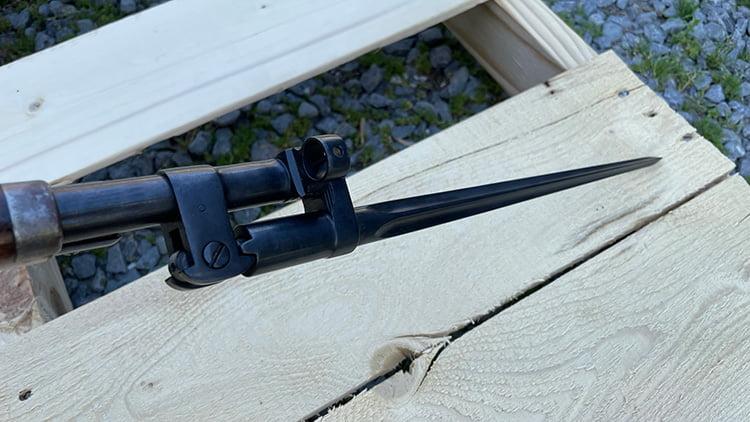
Continuing with the use of the M1891 they would see use in The Great War (WWI). Interestingly enough, The Russians would order around 1.5 million M1891’s from Remington Arms in the USA and around 1.8 million from New England Westinghouse Company. Nowhere near this amount would see production, and even fewer would see delivery for reasons we will not venture into here.
In the interwar years between WWI and WWII, the M1891 would see deployment to several civil wars in and around Europe.
By the start of WWII, almost all of the M1891’s had been updated to the M91/30’s that we are more familiar with today. The change took place in 1930, hence the updated nomenclature M91/30.
Since the end of WWII, these rifles have seen deployment to every major soviet connected conflict. They have appeared in Vietnam, Korea, Afghanistan, Iraq, Libya, and most recently Ukraine.
This goes to show how prolific this rifle has become. A basic design from over 130 years ago is still seeing active conflict to this day in 2022.
Types
There are several variants of the original M1891. Obviously, the M91/30 was the next major development.
Read more : When Is The Next Whole Foods Beauty Sale
Following the M91/30, some were taken and given a side-mounted low-power scope and a dog-legged bolt and turned into marksman rifles.
The scope was located close to the centerline of the rifle, thus making it necessary to change the bolt design. These rifles are generally referred to as M91/30 PU.
In 1938 the Model M38 was introduced. The M38 would be a carbine version of the M91/30. The barrel was shortened for troops that typically would not see front-line combat. This would include artillery and other rear echelon troops.
The M38 would be issued with the same style detachable bayonet found on the M91/30.
1944 would see the next main development in the M44. The M44 was basically the M38, but now with an attached side-folding bayonet. This makes logistics simple but adds a ton of weight as the bayonet and its folding/locking mechanism are made out of steel.
Mosin-Nagant Review
I’m going to just right into the Mosin-Nagant review as it’s a fairly simple rifle in terms of controls and components.
Muzzle
As with a lot of pre turn of the century rifles, the muzzle of the Mosin-Nagant doesn’t have a lot going on.
Like most rifles of the era, the muzzle does accept a bayonet. The bayonet slides over the barrel and is a cruciform design. Interesting to note, this design is said to have been chosen because it was hard to sew closed once stabbed. This would be advantageous in war for obvious reasons. The design would be banned later.
Front Sight
The front sight on the M91/30 is a simple windage driftable post protected by a full hood.
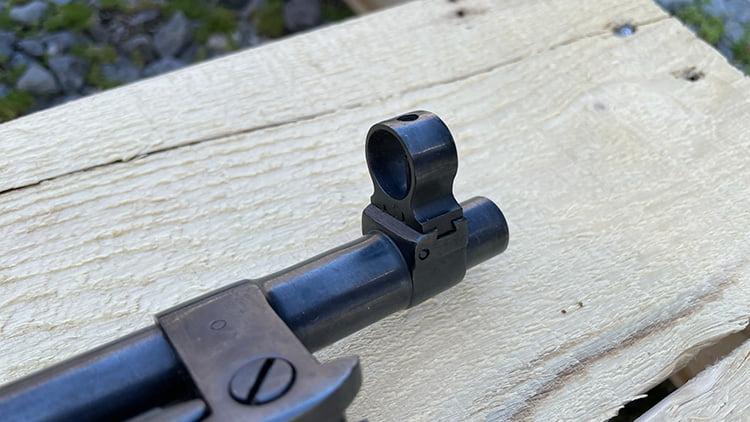
The hood would serve two purposes, one would be to protect the sight post from becoming bumped and thus bending it, and losing zero.
The second purpose would be to shade the post from direct sunlight. This would aid in sighting the rifle in the direct sun, allowing the shooter to see the post without glare.
Barrel
The Barrel of the M91/30 is a whopping 29 inches long. This is truly massive when you consider most rifles in today’s time top out at 16-18 inches. Even the long M16 barrel at 20 inches is dwarfed by this length.
The length of the barrel along with the 7.62x54R cartridge is what makes the Mosin-Nagant such a viable weapon to this day.
As stated above the barrel of the Mosin is chambered in 7.62x54mmR. This round is a devastating cartridge capable of accurate hits well out to 500 yards.
Stock
The stocks on the Mosin-Nagant rifles are wood and covered in a lacquer. The wartime productions are typically made from beech, laminated beech, or laminated birch.
The stock construction is typically made from two separate pieces that are glued together. This aided in the simplicity of construction and helped keep costs low.
Cartouches
Found on virtually all wooden-stocked Military Surplus rifles are cartouches. A cartouche is basically a stamp that would denote any number of things about the rifle.
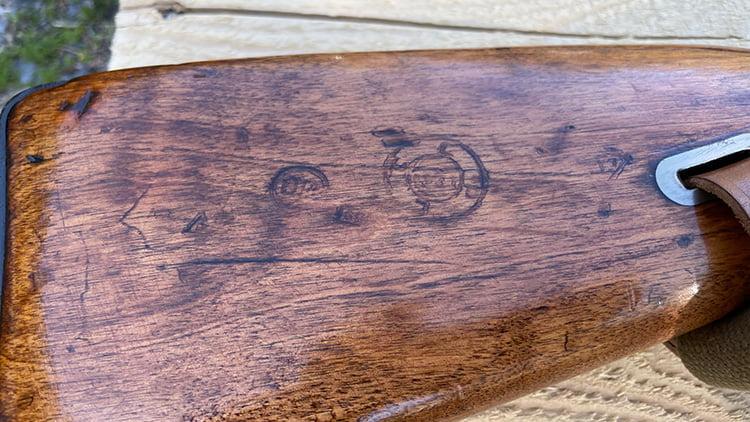
Some cartouches are rare and are highly sought after by collectors. If you have a Mosin Nagant with cartouches, it would be a good idea to try and research the meaning and you may end up finding out some of the history of your particular rifle.
Action
The Mosin Nagant is a bolt-action rifle. The bolt has a 90-degree throw, from the 3 o’clock position when locked to the 12 o’clock position when rotated to unlock.
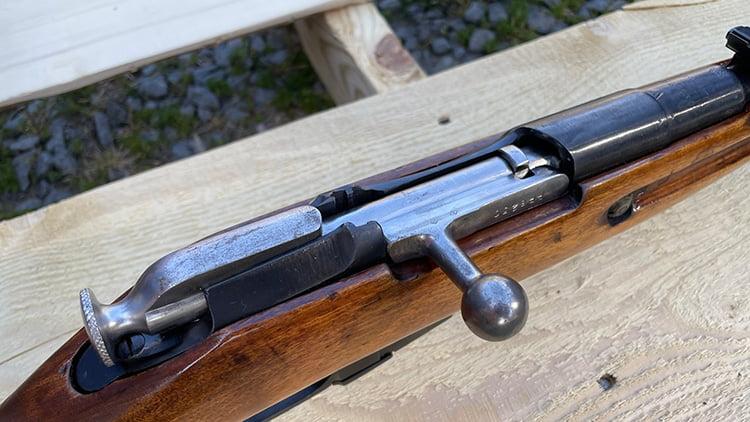
As mentioned earlier, the PU versions of the Mosin-Nagant would receive a modified bolt to be able to clear the bell of the scope.
The bolt-on the Mosin-Nagant would utilize two locking lugs found at the front of the bolt.
The striker is a cock on lock design.
The safety is located on the rear of the bolt and requires you to pull back against the spring and rotate it to a shelf to make it safe. To be ready to fire you need to pull the knob to the rear and rotate it back to the vertical position.
Magazine
The magazine on the Mosin-Nagant rifle is a permanently attached box. It is attached to the bottom of the action and passes through the stock.
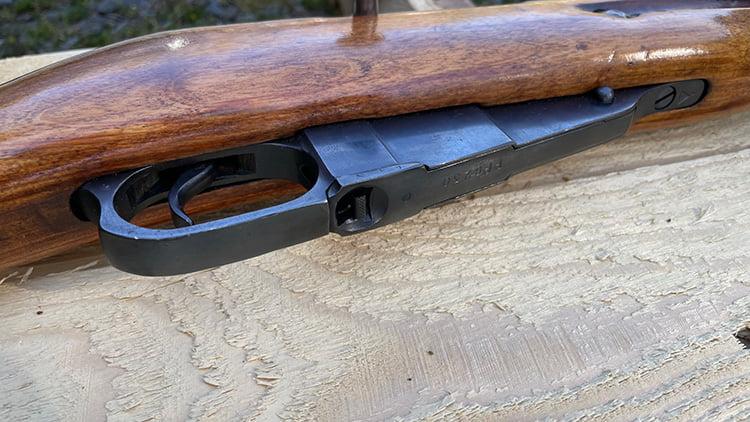
The magazine has a catch on the bottom that opens the door downward. This can be used to administratively unload the magazine from the rifle.
To load the magazine, you can load individual rounds into the top by hand, or you can use a stripper clip that is held in place by guides milled into the receiver.
Read more : How Do Narcissists Act When Drunk
You must take notice when loading the Mosin-Nagant of how the rimmed cartridges are placed once in the magazine. If you do not load them the correct way, they may become locked on each other when you cycle the bolt of the rifle. This is referred to as rim-lock. While mostly an inconvenience, it is a drawback to a fighting rifle.
Trigger
There is really not much to say about the trigger on a Mosin-Nagant, other than to say it is plain.
Somewhat surprisingly, there is an aftermarket for M91/30 triggers. Who knew?!
Field Strip
To field strip this relic, the first step like all firearms is to make sure it is not loaded.
After you have made the rifle safe, you can then remove the bolt. To remove the bolt you simply pull the bolt back to the rearmost travel point and when you feel it catch, pull the trigger. This allows for the bolt to slide past its catch and be removed from the rifle.
The next thing is to remove the forend. To accomplish this, you must remove the barrel bands. These are the rings of metal that go around the forend of the rifle. Each is held in place by a spring that must be compressed to allow for the bands to be slid to the front of the rifle. Once these are removed, the top of the forend can be separated and taken off.
Next, unscrew the cleaning rod from its position below the barrel.
After removing the cleaning rod, you will need to remove the magazine base plate/follower. This is accomplished by releasing the door and squeezing the follower and spring to the baseplate. This allows for the clamp to be released and you can then separate the mechanism from the magazine.
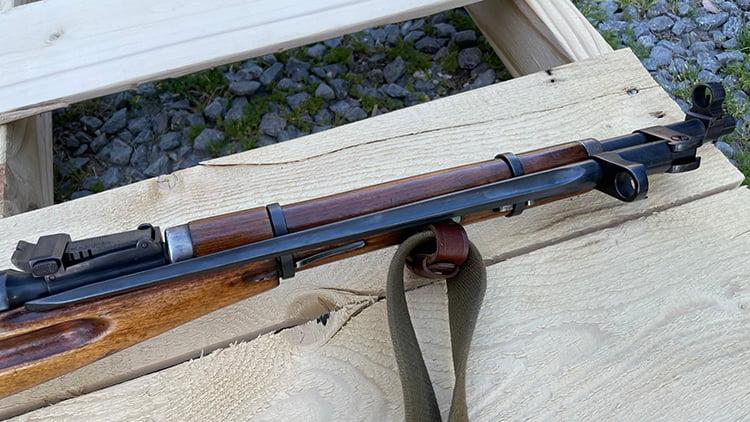
You must then remove the screw located at the bottom of the magazine tang. If you have a model that has a detachable bayonet, the tip of the bayonet doubles as a flat head screwdriver. If you do not, you can use the tool kit that was issued along with the rifle or simply a large flat head screwdriver.
The next screw that will be removed is located at the rear of the receiver on the top side. It is the receiver tang screw.
The same tools can be utilized to remove this screw as the previous one.
After you have these parts removed, the barrel, action, and trigger can be lifted from the stock. The magazine and trigger guard may then be removed from the bottom of the stock.
This is as far as one would need to break the Mosin-Nagant down to clean. When cleaning, it is advisable to use a solution that contains ammonia, as this will cut the corrosive salts left behind if you have fired such ammo through the rifle.
The bolt can then be disassembled to complete the strip of the rifle. First, you will need to decock the bolt. This is accomplished by rotating the bolt head 90 degrees.
The guide rod will slide off the front of the bolt along with the bolt head/face. To remove the bolt head, rotate it until the grove allows it to travel away from the guide rod.
The next step you will use the forked portion of the guide rod to turn the firing pin until it releases. You must take note that the firing pin is under pressure from the firing spring. If you do not keep pressure on it, it will go flying.
Once you have the firing pin and spring removed, the rear cocking knob will come off the body of the bolt.
This is the complete field strip of the Mosin-Nagant Rifle.
Shooting the Mosin-Nagant
Shooting the Mosin-Nagant is shooting a piece of history. When you heft the M91/30 up to your shoulder you take notice of its weight. It is a solid piece of wood and steel. This weight comes as an advantage when you pull the trigger because the 7.62x54R is no slouch. There’s a reason it is still used to this day.
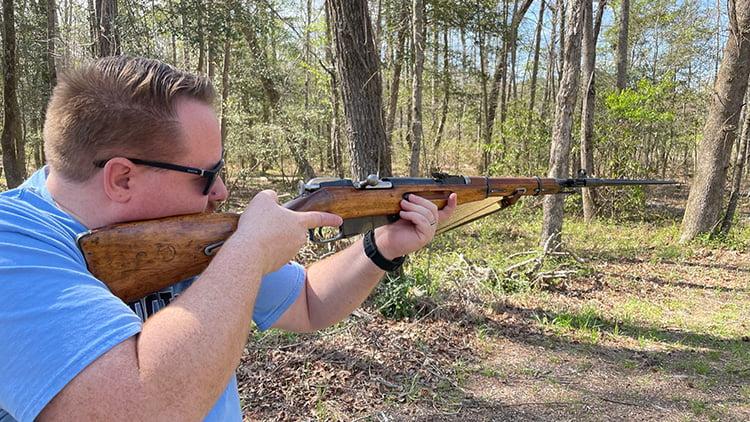
If you are shooting a carbine version of the M91/30, you can now say “goodbye” to your target and situational awareness, because the fireball that emanates out of the barrel of this thing is gargantuan. I have not gotten a chance to measure, but I would estimate the length to be at least three feet long, and at least a foot across.
To say the Mosin-Nagant is fun to shoot would be too easy. The controls and sights of years past coupled with the powerful cartridge make for an enjoyable time at the range, if you’re outdoors that is. I can not imagine shooting the Mosin-Nagant inside.
Final Thoughts
My final thoughts on any version of the Mosin-Nagant rifle are this; If you are lucky enough to find a non-bubba’d or “sporterized” version of this classic Military Surplus rifle, buy it.
I know the pricing has gone through the roof recently, not only due to the inflation we are seeing in 2022 but due to the availability of the surplus market as well.
Once imports dry up, you run the risk of not having another batch come into the USA for quite a while. With the current situation between Russia and Ukraine, this simple but solid war horse may become even rarer in the near future.
Don’t miss out on your chance to own a piece of history.
FAQ’s
You might have a few questions related to the Mosin-Nagant and here are a few of the most common.
Source: https://t-tees.com
Category: WHEN
